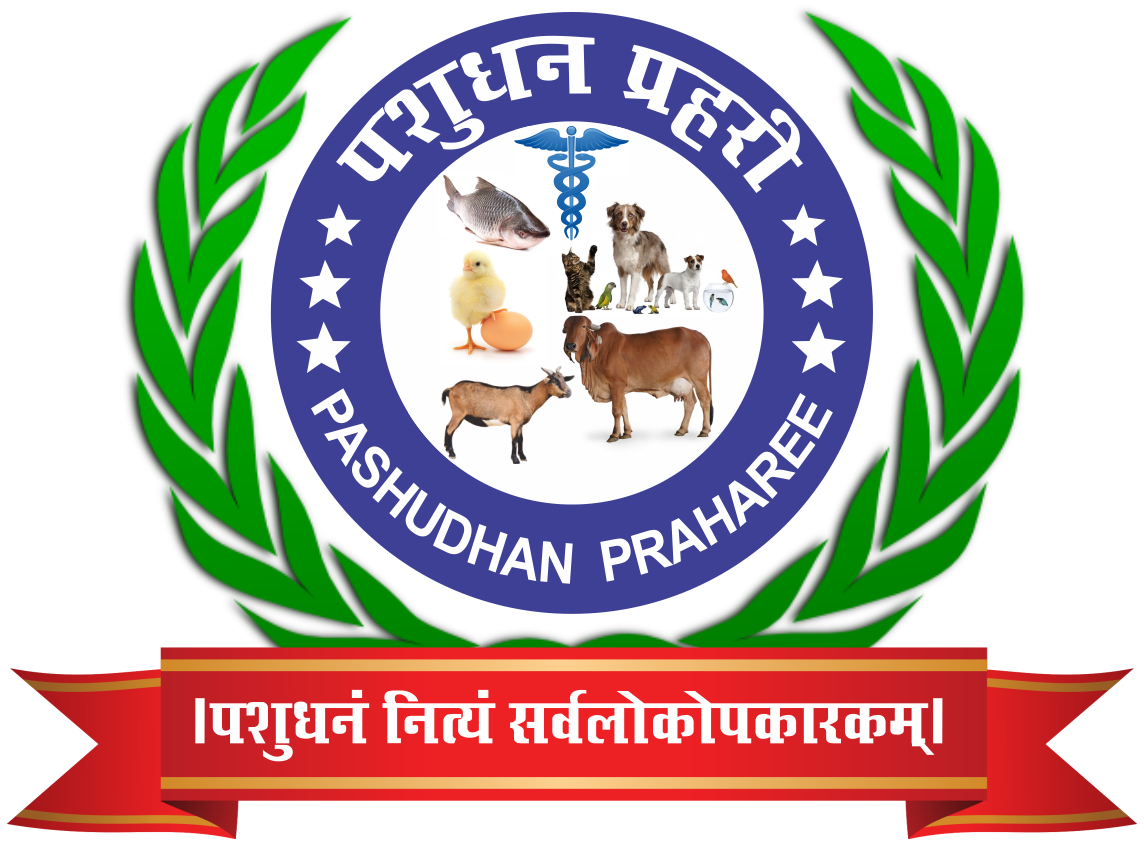Functional Starter Cultures for Fermented Dairy Products
Sandeep Kumar1*, Raj Kumar Berwal2 , Priyanka Masar3 , Vimala Choudhary4 , Kapil Kumar Godara5 and Vinay Kumar6
1,2,3,4,5 Department of Livestock Products Technology, Rajasthan University of Veterinary & Animal Sciences, Bikaner – 334001, Rajasthan, India; 6 Department of Veterinay Animal Extension , Rajasthan University of Veterinary & Animal Sciences, Bikaner – 334001, Rajasthan, India
*Corresponding author: Sandeep Kumar, Department of Livestock Products Technology, Rajasthan University of Veterinary & Animal Sciences, Bikaner – 334001
Mail id – dr.saharans gamil.com
ABSTRACT
Fermented dairy products are valued for their high nutritional, therapeutic, and sensory qualities, contributing to their global popularity. The characteristics of these products are largely due to the activity of starter cultures, which are microorganisms that, during fermentation, produce various compounds and enzymes. These by products impart desirable traits such as flavor, texture, and health benefits to the final productLactic acid bacteria (LAB) are the primary starter cultures used in dairy fermentation. They produce a variety of compounds, including organic acids, gases, bacteriocins, flavoring agents, and nutrients, which vary across species and strains. These compounds enhance the nutritional value, sensory characteristics, and therapeutic benefits of the products. LAB starter cultures are crucial for developing functional fermented and probiotic dairy products. This chapter examines the role of functional starter cultures in dairy fermentation.
Keywords
Fermented Dairy Products, Starter Cultures, Nutrition benefits
Introduction
Fermented foods have been a significant part of human tradition and nutrition across civilizations. These products are valued for their rich nutritional and therapeutic benefits. The health-promoting effects are attributed to the diverse microbial cultures involved in fermentation, which either enhance the substrate’s nutritional profile or produce bioactive compounds beneficial for health. Leeuwendaal NK et al.,(2022) The wide biodiversity of these microorganisms imparts unique characteristics to each fermented product, contributing to both its flavor and health benefits. The functionalities of fermented foods can be categorized into technological and therapeutic aspects. The growth of lactic acid bacteria (LAB) influences food functionality based on the specific species or strain used and the food’s composition. Additionally, both the technological and health-promoting effects of these cultures can vary significantly. Sudhanshu S. Behera et al.,(2020) The production of fermented milk products like yogurt, buttermilk, and cheese involves fermenting milk with specific microorganisms. These starter cultures break down milk’s carbohydrates and other nutrients into lactic acid and other metabolites. The resulting physico-chemical changes in milk depend on factors such as the type of starter bacteria, growth conditions, and the milk’s composition. María García-Burgos et al .,(2020) Starter cultures produce organic acids like lactic, formic, and acetic acid, which lower the pH of milk, causing protein coagulation. Lactic acid contributes to the characteristic acidic flavor and preserves milk solids. Coelho, M. C., et al., (2022) Additionally, the flavor and aroma of fermented milk products are shaped by the flavors produced by starter or adjunct cultures Major flavor compounds in fermented milk products include diacetyl, acetoin, and acetaldehyde, with their biosynthesis being species- and strain-specific. Bintsis T.,2018 Fresh milk is highly susceptible to spoilage, but fermentation naturally extends its shelf life. This preservation occurs through organic acids, as well as antimicrobial and antifungal compounds produced by the starter cultures. Coelho M.C., et Al.,2022 Starter cultures for fermented products are carefully chosen based on their biochemical and metabolic traits to impart specific functionalities or characteristics to the product. Traditionally, these cultures have thrived in such fermented products. Sionek, B et.al., (2023).
FUNCTIONALITY OF STARTER CULTURES
Functional starter cultures have at least one inherent functional property, offering benefits such as improved organoleptic qualities, food preservation, safety, texture, and flavor. They accelerate cheese maturation, produce nutraceuticals, and reduce toxic or anti-nutritional factors, making them valuable in the food fermentation industry. Hati S et al.,(2013)
Role of Starter cultures and Enzymes/ rennet for fermented dairy products Manufacture
Role of Starter cultures
Fermented milk products are made using different lactic starter bacteria, such as Lactobacillus and Streptococcus species, which vary by product (e.g., yogurt, kefir, cheese). EMEA (2000) Dairy starter cultures, primarily composed of lactic acid bacteria, are used in making products like butter, cheese, yogurt, and cultured milk, where they produce acids essential for fermentation. Hansen EB (2002) Starter cultures convert lactose into lactic acid, souring the milk and aiding in fermentation, while lactic acid bacteria enhance food preservation and flavor. Rajiv ID (1998) Lactic acid bacteria (LAB), such as Lactococcus lactis and Streptococcus thermophilus, are key in fermenting milk and generating flavor compounds in yogurt. Gerrit S, Bart AS, Wim JME (2005) LAB starter cultures are crucial for cheese flavor formation, with roles divided into starters and non-starters, including adjunct cultures. Starter cultures produce acid during manufacture and aid in ripening, while non-starter cultures contribute mainly to the ripening process. Widyastuti Y, Rohmatussolihat, Andi Febrisiantosa (2014), Kongo MJ (2013) Starter cultures are essential for producing various dairy products like cheese, butter, and yogurt, while also controlling preservation and fermentation processes. Natural cheese making uses lactic acid from LAB fermentation to control pH; LAB are Gram-positive, non-motile, and non-spore forming. Beard Gale M (2009) Yogurt’s taste is acidic due to lactic acid, while its aroma comes from volatile compounds, with acetaldehyde being the key flavor compound, giving it a fresh, fruity scent produced by lactic acid bacteria. Corrieu G and Béal C (2016) The acid produced during fermentation forms curds (gel) and contributes to syneresis, which removes water from the milk proteins. ASM (2014).
Referance
ASM American Society for Microbiology (2014) Microbes Make the Cheese.
Beard Gale M (2009) The Impact of Intrinsic and Extrinsic Factors on the Safety and Quality of Hard and Semi-soft Natural Cheese.
Bintsis T. Lactic acid bacteria as starter cultures: An update in their metabolism and genetics. AIMS Microbiol. 2018 Dec 11;4(4):665-684. doi: 10.3934/microbiol.2018.4.665. PMID: 31294241; PMCID: PMC6613329.
Coelho MC, Malcata FX, Silva CCG. Lactic Acid Bacteria in Raw-Milk Cheeses: From Starter Cultures to Probiotic Functions. Foods. 2022 Jul 29;11(15):2276. doi: 10.3390/foods11152276. PMID: 35954043; PMCID: PMC9368153.
Coelho, M. C., Malcata, F. X., & Silva, C. C. G. (2022). Lactic Acid Bacteria in Raw-Milk Cheeses: From Starter Cultures to Probiotic Functions. Foods, 11(15), 2276. https://doi.org/10.3390/foods11152276
Corrieu G and Béal C (2016) Yogurt: The Product and its Manufacture. In: Caballero B, et al. (Eds.) the Encyclopedia of Food and Health, Oxford: Academic Press, vol 5: 617-624.
EMEA (2000) Note for Guidance for the Assessment of the effect of antimicrobial substances on Dairy Starter cultures.
Gerrit S, Bart AS, Wim JME (2005) Flavour formation by lactic acid bacteria and biochemical flavour profiling of cheese products. FEMS Microbiology Reviews 29: 591-610.
Hansen EB (2002) Commercial bacterial starter cultures for fermented foods of the future. International Journal of Food Microbiology, pp. 119-131.
Hati S, Mandal S, Prajapati J. B. Novel Starters for Value Added Fermented Dairy Products. Curr Res Nutr Food Sci 2013;1(1):83-91 doi : http://dx.doi.org/10.12944/CRNFSJ.1.1.09
Kongo MJ (2013) Lactic Acid Bacteria as Starter- Cultures for Cheese Processing: Past, Present and Future Developments
Leeuwendaal NK, Stanton C, O’Toole PW, Beresford TP. Fermented Foods, Health and the Gut Microbiome. Nutrients. 2022 Apr 6;14(7):1527. doi: 10.3390/nu14071527. PMID: 35406140; PMCID: PMC9003261.
María García-Burgos, Jorge Moreno-Fernández, María J.M. Alférez, Javier Díaz-Castro, Inmaculada López-Aliaga, New perspectives in fermented dairy products and their health relevance, Journal of Functional Foods Volume 72, 2020, 104059, ISSN 1756-4646, https://doi.org/10.1016/j.jff.2020.104059.
Rajiv ID (1998) Factors Affecting Viability of Yoghurt and Probiotic bacteria in Commercial Starter cultures.
Sionek, B., Szydłowska, A., Küçükgöz, K., & Kołożyn-Krajewska, D. (2023). Traditional and New Microorganisms in Lactic Acid Fermentation of Food. Fermentation, 9(12), 1019. https://doi.org/10.3390/fermentation9121019
Sudhanshu S. Behera, Aly Farag El Sheikha, Riadh Hammami, Awanish Kumar, Traditionally fermented pickles: How the microbial diversity associated with their nutritional and health benefits?, Journal of Functional Foods, Volume 70,2020, 103971, ISSN 1756-4646, https://doi.org/10.1016/j.jff.2020.103971.
Widyastuti Y, Rohmatussolihat, Andi Febrisiantosa (2014) The Role of Lactic Acid Bacteria in Milk Fermentation. Food and Nutrition Sciences 5: 435- 442. 24.



